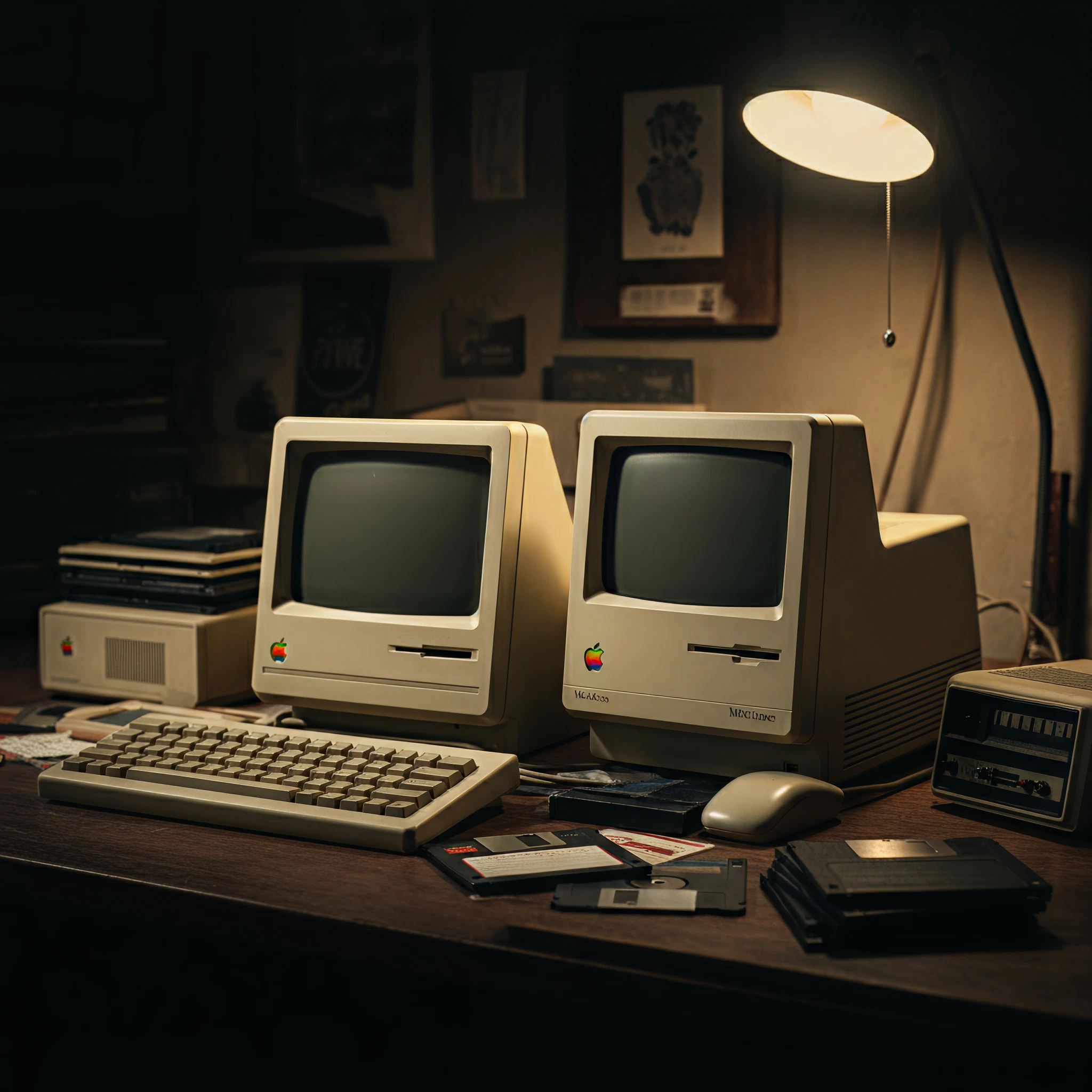Apple’s computers from the 1990s hold a unique place in tech history. From their iconic designs to groundbreaking innovations, these machines formed the foundation for modern computing. For tech enthusiasts and Apple historians, they represent a glorious chapter in Apple’s evolution. Join us for a trip down memory lane as we explore the designs, technologies, and cultural impact of 90’s old Apple computers.
Iconic Designs of the 90s
One thing the 1990s Apple computers did exceptionally well was design. Even during challenging financial times, Apple’s bold aesthetics stood out in the sea of beige, boxy computers.
PowerBook Series (1991): Revolutionizing Portability
Apple introduced the world to the PowerBook in 1991, a laptop series that revolutionized the portable computer market. Its innovative design included a trackball positioned in the center, allowing for a more compact, user-friendly layout.
- Notable Model: PowerBook 170 was a favorite with its 25 MHz processor and active LCD screen, making it a luxurious purchase for businesses and creatives alike.
iMac G3 (1998): A Design That Saved Apple
Arguably the most famous ‘90s Mac, the iMac G3 came in a variety of bold, translucent colors like Bondi Blue and Tangerine. Designed by the legendary Jony Ive, it didn’t just look good; it was functional and easy to use.
- Key innovation: The iMac G3 replaced complex inputs with USB ports, acting as a bridge to a more modern computing era.
Technological Innovations in the 90s
While they were known for their design, 90s old Apple computers were also pioneers in technology. Here’s what made them stand out.
The PowerPC Processor (1994): A Performance Boost
Apple’s partnership with IBM and Motorola to develop the PowerPC processor marked a significant leap in performance compared to previous Macintosh devices. This new architecture paved the way for faster and more efficient Apple computers.
Introduction of Active Matrix Displays
The Macintosh Portable and later PowerBook models featured active matrix displays, a cutting-edge technology in the early 90s that offered sharper, brighter screens. This innovation catered to professionals who valued clarity for graphic design and presentations.
Apple’s Cultural Impact in the 90s
Apple wasn’t just about computers in the 90s; it was one of the first companies to integrate design, advertising, and technology into a lifestyle brand.
“Think Different” Campaign
Launched in 1997, Apple’s “Think Different” campaign broke the mold by celebrating innovators like Albert Einstein and Mahatma Gandhi. It wasn’t about selling computers; it was about selling a vision of creativity and progress.
- Impact: This campaign solidified Apple’s brand as innovative and aspirational, a positioning it holds to this day.
Nostalgia and Collector’s Market
Today, 90’s old Apple computers have become cultural artifacts highly sought after by collectors. Models like the iMac G3 and PowerBook 170 in limited editions (e.g., the colorful JLPGA PowerBook) fetch thousands of dollars due to their rarity and historical significance.
Classic Software and Games
No piece on Apple’s history is complete without mentioning the classic software that defined the user experience in the ’90s.
- ClarisWorks (later AppleWorks): An all-in-one office suite that catered to both professionals and students alike.
- Myst and Marathon: Iconic games that gained cult followings and showcased the graphics capabilities of Apple computers.
- Photoshop (early versions): The PowerPC architecture made Apple the go-to platform for graphic designers and creatives.
How 90’s Old Apple Computers Shaped Modern Apple
The influence of 90’s Apple designs and innovations is clear in Apple’s modern product lineup. The emphasis on minimalism, intuitive user interfaces, and seamless hardware/software integration that we see in modern Apple products like the MacBook and iPhone have roots in the foundations laid during this decade.
- Design Parallels
The translucent plastics of the iMac G3 foreshadowed the sleek aesthetics of today’s products.
- Hardware Evolution
Active displays and USB integration of the ’90s Apple computers set the stage for technologies that most users rely on daily now.
Maintenance Tips for Vintage Apple Computers
For vintage tech enthusiasts, maintaining a 90’s Mac can be a labor of love. Here are some tips to keep your nostalgic hardware in working condition:
- Capacitor Replacement
Many 90’s Macs suffer from leaking capacitors. Having these replaced can significantly extend the machine’s lifespan.
- Floppy Disk Drives Issues
Ensure your floppy drives are clean and regularly maintained, as they can get jammed over time.
- Sourcing Parts
Sites like eBay and local retro computer forums can be great for finding rare parts and compatible peripherals.
Final Thoughts
The 1990s were a pivotal decade for Apple. Despite financial struggles, the company introduced revolutionary designs and technology that set the stage for the tech giant’s resurgence. From the iconic iMac G3 to the powerful PowerBook series, 90’s old Apple computers continue to captivate enthusiasts and collectors with their ingenuity and lasting cultural impact.
Ready to relive the magic? Share your stories or collection in the comments below!








